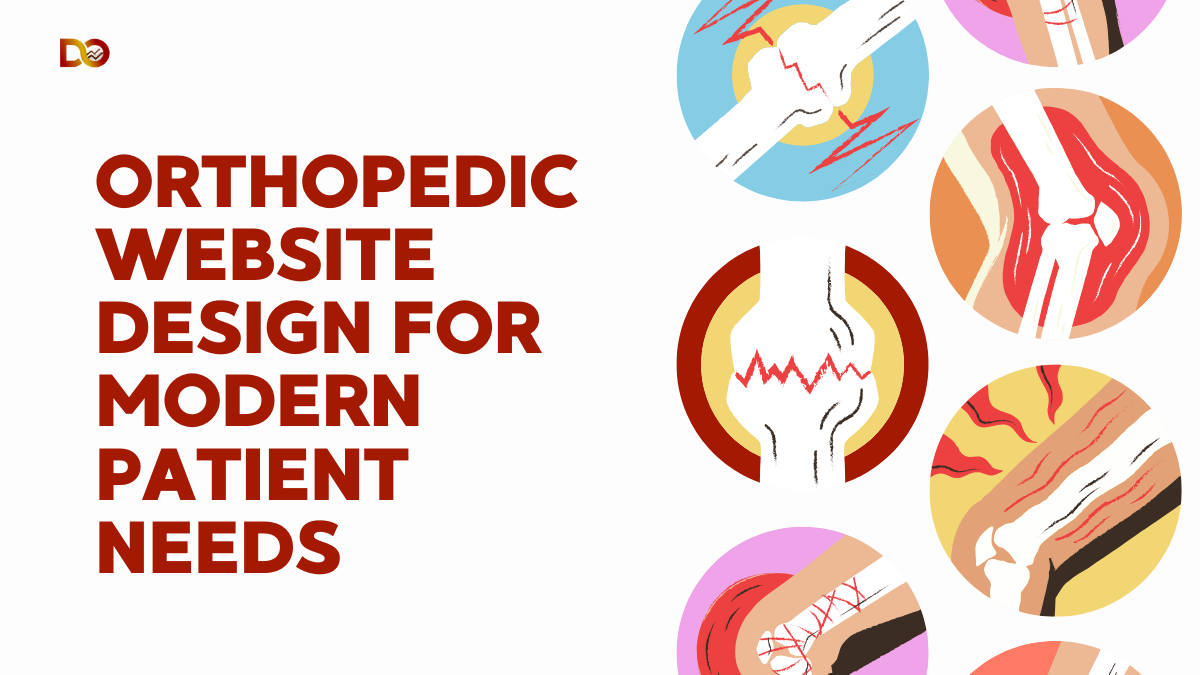Introduction
In the digital-first era, patients search for healthcare providers online before visiting a clinic or office. For orthopedic practices, having an online presence isn’t a privilege but a reality, and a good orthopedic website design does more than just represent your brand; it also drives patient engagement, patient appointment booking and trust. If you are a solo orthopedic surgeon or a large orthopedic group, your website may be a major contributor to your success. The following article introduces the importance of orthopedic website design, the that are separate from healthcare website development and why you need professional healthcare web design services to develop high-performing digital mechanisms.
The Importance of Orthopedic Web Design
Orthopedic care is a specialized field. Patients seeking orthopedic care are usually in pain and searching for help. They want a quick fix and to know just what they are getting. A regular website will not achieve this. You need a website that:
– Showcases your orthopedic specialties (i.e. joint replacement, spine surgery, sports injuries)
– Shows trust with your credentials, testimonials, and case studies
– Allows easy appointment scheduling
– Educates patients with blogs, videos, FAQs, etc.
– Is mobile-friendly and loads fast
A custom orthopedic website design does all this and more, and follows modern usability standards.
Essential Elements of a Successful Orthopedic Website
In order to turn visitors into actual patients, orthopedic sites need to have:
1. Easy to Navigate
Your patients may be older or in pain. Confusing options, information, or layout can quickly turn them away. A clearly defined menu, large buttons, and a straightforward user interface are essential.
2. Responsive Designs
More than 60% of healthcare searches are conducted through mobile devices. When an orthopedic website is responsive, your patients can spend less time trying to get to you on their smartphones or tablets.
3. Online Appointment Scheduling
Patients expect to be able to book their appointments online and you should have an integrated and secure scheduling option as part of your orthopedic website development.
4. Specialty Specific Content
Your content should be specialty specific for the orthopedic services you provide- knee injuries, shoulder pain, physical therapy, etc. Be sure to include descriptions of the treatments, timelines for the procedures, and the expectations for recovery.
5. Provider Biographies and Credentials
Establish credibility by including biographies, training, years practice, and endorsements of rehabilitation doctors in your practice.
6. Search Engine Optimization
Your website will need to be optimized for local search engines so that patients in your area can find you. This means targeting key phrases like “orthopedic surgeon near me” or “best orthopedic care in [city]”.
7. HIPAA Compliance
This may go without saying, but security and privacy cannot be compromised. A good orthopedic website would ensure it is developed with HIPAA guidelines as applicable to patient forms and data collection and storage.
Ways Healthcare Web Design Services Provide Value
Healthcare web design services primarily focus on building websites that meet guidelines and build sites for healthcare providers as this presents its own set of unique challenges. Below are ways they can help your orthopedic area:
– Custom Web Designs When Medically Branded
Websites represent your specific brand identity – not all orthopedic specialists are the same. For example, a modern orthopedic center vs. a family-owned clinic. Professionals can develop visuals, tone, and messaging that accurately express your brand.
– Comprehensive SEO and Content Strategy
Web design is only one piece of the puzzle. Professional healthcare web design agencies also provide keyword identification, blog content, landing pages, and search engine optimization to develop your visibility and traffic increase.
– Integrating Healthcare Capabilities
Most web design services also assist integrating your website with electronic medical records (EMR), patient portal, payment procedures, and appointment setting–improving internal processes and exposure for the participant.
– ADA and HIPAA Compliant Designing
Compliance is critical to designing your orthopedic site. Professionals understand and have industry practice standards to follow and apply so that your orthopedic site is accessible and legal as you build your online presence.
– Maintenance and Continued Support
Some initial development companies can walk away after launch and not care about you again. Not a good move for a quality healthcare project. ACARE agreements cover the ongoing followed by maintenance, managing your security updates, and citing activity analytics related to your enhanced digital primary healthcare relations with patients and community!
Best Practices for Developing Healthcare Websites
When developing a new orthopedic website from the ground up, or a redesign of an existing website, remember the following best practices for developing healthcare websites:
1. Speed
Patients are not going to wait. Websites should load in less than three seconds. Optimize images, compress code, and utilize fast hosting.
2. Content Management System
You want to use a flexible Content Management System (CMS) such as WordPress or Webflow. This makes it easy for you to update your content, post blogs, and manage your service pages without having to rely on a developer.
3. Patient Education Materials
Include a blog, explainer videos, or downloadable guides. You want to provide as much educational material as possible. Providing educational content enhances your authority and helps patients understand their decisions better.
4. Secure Hosting
Select secure, HIPAA compliant hosting, along with secure SSL certificates and regular automatic backups. Security is increasingly important in healthcare.
5. Analytics and Conversions
You should track how users are engaging with your website. You can track bounce rates, submissions of appointment forms, or click-through rates of service pages to improve performance over time.
Read more : The Ultimate Guide to Healthcare Software Development in 2025
Real-World Success: Orthopedic Practice Case Study
Let’s look at a real example. An orthopedic center in California improved their outdated website with specialized healthcare web design services. Their new site included:
– Simple navigation
– Mobile-first design
– In-depth service pages
– A “book now” CTA on every page
– Patient testimonials and before/after images
Results within 6 months:
– 40% increase in appointment bookings
– 65% more organic traffic from local SEO
– 30% decrease in bounce rate
This success story illustrates how powerful an optimized orthopedic patient experience on your website can be.
Common Mistakes to Avoid
When building or redesigning your orthopedic website, avoid these key mistakes:
– Generic templates: They do not provide customization or credibility.
– Slow speeds: You risk a high bounce rate and poor SEO.
– Not mobile optimized: You will lose over half your visitors.
– Out of date: You will mislead potential patients which will erode trust.
– Not including CTAs: Visitors will not know what to do next.
Conclusion
An orthopedic website is more than just a good-looking website. A well-designed orthopedic website fosters trust, enhances patient experience, and leads to organizational growth. Working with a professional healthcare web design service allows you to create an online presence that is apace with the quality of care you provide and your patients’ modern-day user expectations.
Limitations on growth to your practice, organization, or brand should not be predicated on an old-fashioned, cookie-cutter website. Investing in a custom orthopedic website design and modern healthcare web development both allows patients to discover and effortlessly connect with you.







